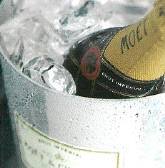|
Awaiting Your Return From Shore |
With its origins
going back to the 10th century, prewar Gdansk - or Danzig as it
was known then - was forged by years of Prussian and Hanseatic
domination. The battles to liberate the city in 1945 resulted in
almost total destruction.
The historic part of town was rebuilt with great reverence; today
it represents one of the richest and most lavish complexes of
architectonic relics in Poland. Entering the historic quarters is
like walking straight into a Hansa merchants’ settlement. Huge
stone gateways guard both entrances to the main thoroughfare; the
well-proportioned tower of the town hall makes a powerful impact.
The main square is filled with fine mansions; among them the Artus
Court, once the residence of Gdansk’s rulers, stands out. Gigantic
St. Mary’s Church reputedly is the largest brick church in the
world; it is able to accommodate 25,000 people. Dominating the
waterside is the seven-story Great Mill, once the largest mill in
medieval Europe.
Together with Gdynia and Sopot, Gdansk makes up an urban-port
complex, the so-called Tri-City. It is known for its shipbuilding
industry; it is the seat of the Higher Martime School, Naval
Academy, Marine Fishing Institute, and Institute of Marine and
Tropical Medicine. Gdynia is the modern port for Gdansk, which is
perhaps the most familiar city in Poland. The home of Lech Walesa,
Solidarity and the former Lenin Shipyards, Gdynia’s images have
flashed across a decade of news bulletins. Expectations formed
from the news reels are fulfilled by the industrial landscape;
suggestions of latent discontent, radicalism and future strikes
are all tangible. What is more surprising is the cultural
complexity of the place.
Near Gdansk lies Sopot, one of the oldest resorts on the Baltic
Sea. It was rated among the most fashionable seaside resorts in
northern Europe during the 19th century. It still is the country’s
most popular health spa, adding its beach and flair for
entertainment to other varied attractions. Visitors come here to
treat their rheumatic problems with salt and mud baths. Sopot is
also known as an important music center, featuring an annual Opera
and International Song Festival. |
Awaiting Your Return
From Shore |
|
Complimentary
Spirits Await |
Return to Your
Suite and Sail Away to The Next Adventure |
Entertainment
and Dancing Await You |











